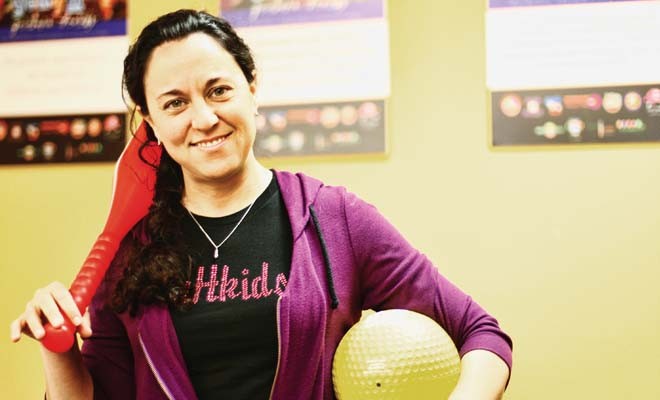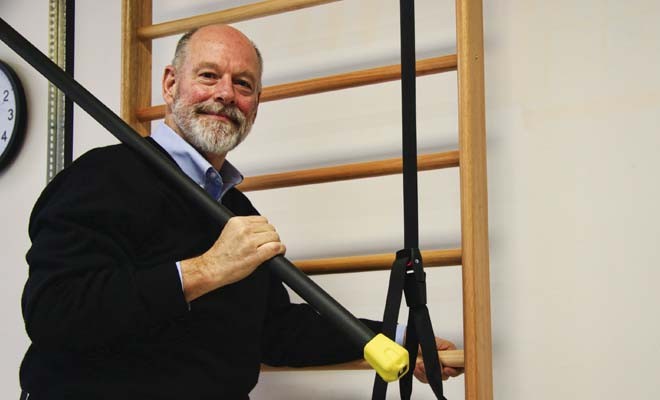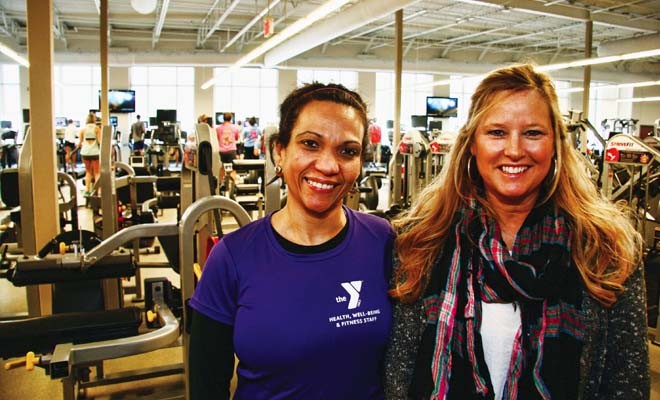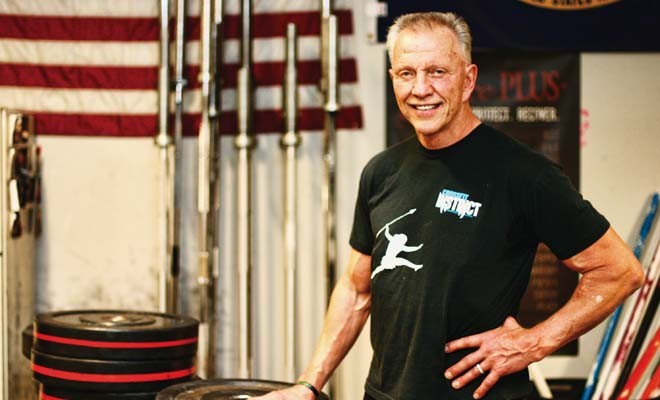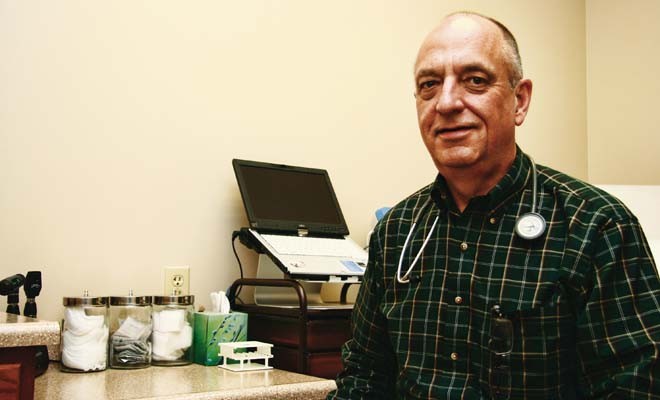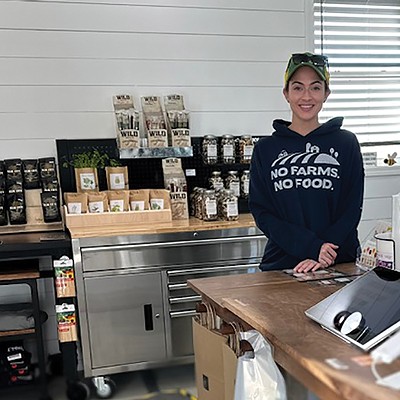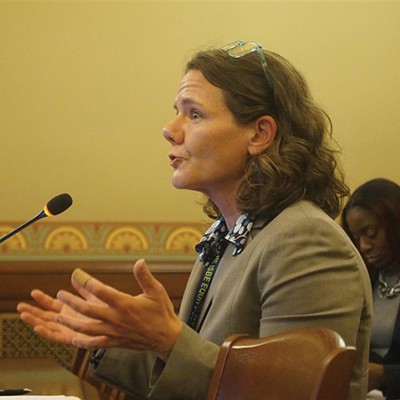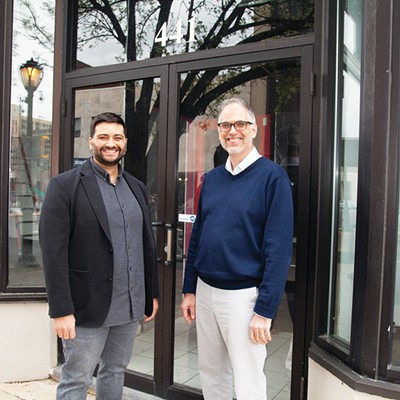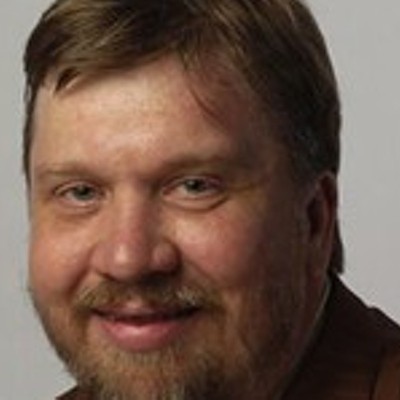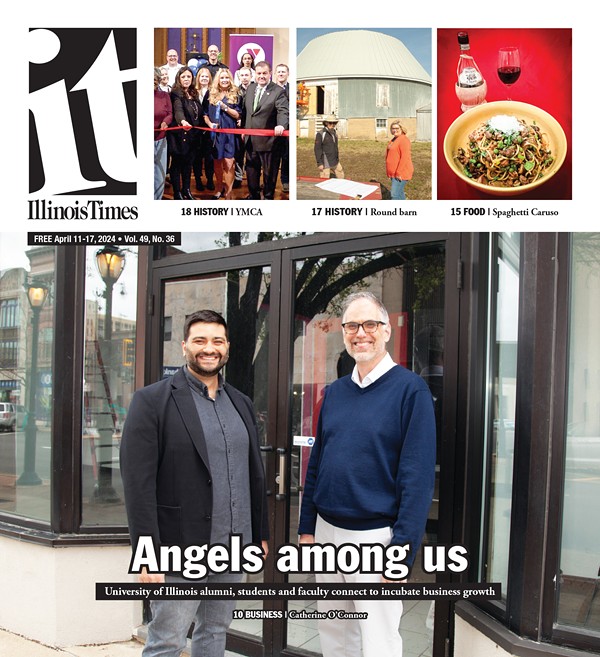Fitness is in. We’ve all seen enough alarming articles about obesity in America to know that something has to change, and there are plenty of people in Springfield trying to do something about it. We’ve selected a small sample of people who are trying innovative and interesting approaches to helping those around them attain a more healthy weight and a more balanced lifestyle. They spoke to Illinois Times about what they’re doing and what health trends they see in Springfield’s future.
Dr. Kemia Sarraf: genHkids Coalition
As kids grow and develop, caring parents try to fill their brains with the best art, morals and ideals to mold them into the best person possible. So why would parents fill their children’s bellies with junk food? Dr. Kemia Sarraf, president and founder of the genHkids Coalition, is seeking to change all that by teaching kids, their parents, their educators and anyone else who will listen about the importance of a healthy lifestyle. GenH operates by the motto “Eat real; move more,” which is a simple way of teaching kids and their handlers to be physically active and consume actual food instead of nutrient-poor garbage.

GenH has several programs aimed at getting their message to kids, including foot races, a community garden, and even teaching school cooks how to prepare delicious food from scratch. Sarraf and her staff went into the kindergarten-through-eighth-grade Ball-Chatham Community Schools and turned their cooks into true chefs. Each day, the chefs prepare real food from scratch for around 3,100 kids, and Sarraf says the district probably hasn’t had to spend much extra – if any – because of good planning, bulk buying and other methods of keeping costs down.
“It has been an extraordinary change,” said Betsy Schroeder, the district spokeswoman. “We have no intention to go back to the heat-and-serve type of meal.”
GenH also runs workshops teaching parents how to do the same thing at home, along with seminars for educators who want to integrate healthy activities into their classroom routines.
Sarraf says teaching kids about healthy living will have a profound effect in the future when those children become the next policymakers. She likens it to the seatbelt initiatives of the 1970s that got seatbelts enshrined into law and made today’s 30-somethings wear seatbelts at higher rates than their elders.
“It may take 20 years to work, but what happens is we grow up with that message in our brain,” she said. “They become a part of our subconscious as well as our conscious lives, and if there’s a proven health benefit behind them, when we become the ones in power, we change the policy. It’s a slow way to do it, but it really does work.”
Dr. David Steward: SIU School of Medicine
Office of Community Health and Service
In order to help someone become healthier, it’s helpful to know everything about that person. The same holds true with communities. That’s why SIU School of Medicine in Springfield in 2013 created a new Office of Community Health and Service. Although the medical school has long been involved in serving the community, Dr. David Steward, the associate dean for the department, says the school wants to fine-tune its efforts to have an even greater effect on the area it serves, which includes much of central and southern Illinois.
Steward, who started at SIU School of Medicine in 1975, has a solid résumé with regard to community health. He has studied regional and local cancer trends, as well as researching children’s health and childhood obesity. He is on the SPARC board of directors, serves on two separate boards with the Illinois Department of Public Health, and is part of St. John’s Hospital’s Community Benefits Committee. Asked what community health means, he paraphrases a definition given by the World Health Organization: the state of complete mental, physical and social well-being, and not just the absence of disease.
“There are a lot of other things that go into health,” he said. “Some of it is economics. Some of it is personal behavior. Some of it is education or social structure or systems of support. All those things end up contributing to health. … You can’t separate the socioeconomic status of the community from the physical and mental health of the community.”
Besides helping coordinate service projects, one of Steward’s tasks is to study the 60-plus counties that make up the medical school’s service area and measure morbidity rates, access to health care, environmental issues, availability of nutritious food and other factors. Much of that information can be gleaned from government records, but Steward says sometimes it’s helpful to simply talk to people.
“A lot of the times, people who live in a neighborhood can tell you what the problems are, what causes them stress and makes them feel uncertain or unhappy or gives them a sense of less well-being.”
Steward notes that this type of study has the potential to improve the health of the workforce, lower a person’s medical costs, and create an entire spectrum of other benefits.
“We’re here to help,” he said. “We recognize that there are a lot of people who have terrific expertise and have put in amazing efforts in this area over many years, so our job is not to get in their way. It’s to support what they’re doing, and if we can help with resources, organizing or some other benefit, we’ll do it.”
Bill Stokes: Weekend Warrior Productions
Winter Training for Runners
When Bill Stokes found himself retired six years ago at 55, he got bored, started a new company and took up running.
“After awhile, I began to notice that everybody was getting injured all the time,” he said. “I thought, ‘I don’t want to be one of those people,’ so I decided to figure out why it was happening.”
What he found would change both his training style and his life: contrary to popular belief, running isn’t a good way to get in shape.
“A lot of people run to lose weight or get in shape, but distance running breaks down the body instead of building it up,” Stokes said. “Running is something you do after you get in shape; it’s not something you do to get in shape. The repetitive stress accentuates your weaknesses. The mechanics of running are based upon having a physique that is perfect to begin with. If you have weaknesses in your legs, your core, or your posture, you’re running on that. You see runners start to develop all sorts of bad habits as the body compensates.”
So Stokes, certified to coach through the Road Runner’s Club of America, began teaching classes for runners who want to avoid injuries, build endurance, and even set personal records. Instead of teaching runners how to run better, he teaches them how to prepare their bodies for running in the first place.
Stokes instructs his pupils to cut sugar out of their diets, and his intense workouts are similar to Crossfit but use mostly body weight, so the exercises can be done just about anywhere.
“Through body-weight exercises, you can develop that core stability and strong center of gravity so that you can go out and run a half-marathon with just a little bit of training,” he said. “You’re running more efficiently.”
Using this method, Stokes says he set a personal record in the Lincoln Memorial Half Marathon in April 2013.
“Because I had such a strong muscular structure, when I got to mile 10, we were starting to head into Lincoln Park, and I wasn’t intimidated at all by the big hills,” he said. “I ran the strongest last two miles I think I’ve ever run. I was 60 years old doing that, and I wasn’t running the training miles that everybody else was, but it was the most fun I’ve ever had running a half-marathon.”
In addition to training runners, Stokes organized Springfield’s first full marathon race in October 2013. More than 1,500 total runners participated in the marathon, marathon relay, half marathon, and 10k races. He expects the race to draw even more participants this year. Currently, Stokes is keeping Springfield runners busy through the winter with his Ice Man Series of runs, which feature 12k and 5k runs around the city.
“It’s all a part of discovery,” Stokes says. “We’re only in this body for a number of years, and I believe that exercise is the fountain of youth. This movement of getting a strong core and muscular strength is a way to push out the grim reaper a few more years.”
Cindy Kropid and Angie Sowle: Springfield YMCA
In many ways, the Springfield YMCA is simply doing what it has always done: offering a safe, fun place to develop your body, mind and spirit. But part of the reason it has stayed relevant is that the organization knows how to keep up with the times. Angie Sowle, CEO of Springfield YMCA, and Cindy Kropid, fitness director, are two of the people working to keep the local “Y” a vibrant, community-focused place.
Sowle, who has worked for the Springfield YMCA since 1987 and took over as CEO about a year ago, says the biggest change she has seen in fitness is that the word “fitness” has become part of the vocabulary because physical activity used to be a given for most people. Office jobs, video games and numerous conveniences have eliminated most peoples’ need to get up and move on a regular basis.
“It isn’t part of our everyday life like it used to be,” Sowle said. “For kids, if you’re not an athlete or on a sports team, there aren’t many venues for you because you’re not riding your bike to your friend’s house or going out and throwing a ball around in the yard. As a society, we’ve had to make fitness a more conscious decision because it’s not part of our lifestyle like it once was.”
That means the Y has to be intentional about the 200-plus classes it offers each week, including short but high-intensity classes for busy people, low-impact exercises for older people or beginners, Bollywood-based dance classes, and different forms of yoga for relaxation or fitness. One of the more unique classes is a water aerobics course for people with disabilities, held at the Kerasotes facility. Kropid says the Y is continually surveying members about their fitness goals.
“I really try to gear everything we do to meet everybody’s needs,” Kropid said.
Sowle says Springfield is unique for its size in having two YMCA facilities. Most mid-sized cities have only one, she says, and members of one YMCA don’t typically have access to other YMCAs in the same city. In Springfield, however, joining the Y means having access to both facilities. Sowle says both facilities get plenty of use, especially among people who exercise over lunch at the downtown facility, then take their kids to the Kerasotes facility in the evening.
Sowle and Kropid say they have seen an increase in teens, “tweens” and older adults exercising at the Y, and they’re working to attract inexperienced people who might be uncomfortable in a gym.
“That’s the hardest group to get: the people who are reluctant to exercise and need it the most,” Sowle said. “We try to tailor our programs into support groups like families so that people who don’t know how to get started can feel at home here.”
Mike Suhadolnik: Crossfit Instinct
Doctors and Nurses Get Fit
When was the last time you met a 77-year-old man who could lay on the ground and touch his toes behind his head? He’s one of Mike Suhadolnik’s fitness pupils, and before he joined Suhadolnik’s Crossfit Instincts program, he couldn’t even touch his toes. Most of the participants are medical professionals over the age of 40 who started with debilitating strength and flexibility limitations, but who are now pushing through those barriers.
An athlete all his life, the trim, muscular Suhadolnik has always been reasonably healthy, so he didn’t think much about fitness until his doctor commanded him to change his diet and lose his body fat to avoid prostate problems. It was that experience that not only focused Suhadolnik’s attention on his overall health, but also led him to question why so many doctors don’t take care of themselves. Suhadolnik, 70, is now on a mission to transform doctors, nurses and other medical professionals in Springfield into living examples of the health advice they give to their patients.
“I think that there are so many doctors who take care of everybody else, but they don’t take care of themselves,” Suhadolnik said. “It’s just like anything else; you expect your advisors to participate in their advice. There are some physicians who do that, but the majority of them don’t. Doctors need to be an example. If we’re going to ever address obesity, the most influential people in our society are doctors.”
A typical class with Suhadolnik includes deep stretches and cardio exercises, scaled for each person’s abilities and designed to challenge them. They work out six or even seven days a week, but the class is only 45 minutes, meaning it’s easy to fit into a busy schedule but intense enough to still have a noticeable effect. He also puts his students on the “paleo” diet, which cuts out processed sugars and other processed foods.
The 21 people who have undergone Suhadolnik’s 90-day program collectively lost 781 pounds, which is an average of more than 37 pounds per person. One person, a doctor who had been diagnosed with Stage 4 cancer and was expected to die, is now able to push through 300 revolutions on an exercise bike without even getting winded. While Suhadolnik doesn’t claim his program cured the cancer, he says it certainly didn’t hurt.
“If you increase your work capacity and reduce your body fat, typically what happens is your vitals improve,” he said. “As a result of that, you need less medication to monitor and take care of an illness.”
By working with doctors and other medical professionals, Suhadolnik hopes to indirectly reach the rest of Springfield, especially older people who are now facing major medical problems.
“It just seems that the previous generation and my generation really didn’t pay attention to taking care of themselves,” Suhadolnik said. “I saw what they went through before they died, and that simply is not going to happen to me.”
Dr. Craig Backs: CBA Personal Medicine
Dr. Craig Backs was one of Mike Suhadolnik’s first “experiments.” Under Suhadolnik’s guidance, Backs went from weighing almost 240 lbs. to a much healthier weight of around 185 lbs. in 2012. Now, Backs has integrated what he learned into his private medical practice.
“It has really changed just about everything about my life,” Backs said. “The focus of my practice has changed a great deal, from trying to rescue people from bad things that were happening to trying to be more preventative toward chronic illness.”
After more than 30 years as a doctor, Backs knew just about all of the conventional advice for overweight patients. But once he began to put that advice into practice himself, he saw how difficult it can be.
“I have more understanding, knowledge and empathy about what it takes to change one’s lifestyle in terms of diet and exercise,” he said. “I think it has given me more credibility with people as I give them advice on how to help themselves when I’ve actually done that myself.”
Backs’ practice is rooted in scientifically sound medicine, but he says he takes more time now addressing a patient’s underlying problems instead of just treating the symptoms. He says learning more about managing problems like heart disease – the leading cause of death in the United States – has made him more optimistic.
“I’m much more hopeful that we can have fewer deaths and disabilities from cardiovascular disease if we just apply these things,” he said.
Although the benefits of this type of practice are obvious to Backs, he says it may be years or even decades before the traditional health care system catches up.
“Right now, we’re still very much in the mode of reimbursing for treating illness,” he said. “I think what we’re seeing now is that there are individuals who are taking enough interest in their own wellness and are willing to spend their own resources and time to help themselves and not wait for their insurance company or a government program to help cover it. That’s going to happen more among people with more disposable income in the beginning, but that’s been true of just about every innovation that we’ve seen in our culture, whether it’s color television sets, home computers or smartphones.”
In the meantime, Backs is helping change the culture of medicine by working with Mike Suhadolnik on his “Doctors and Nurses Get Fit” concept. And Backs seems to be genuinely enjoying his practice.
“It has been very meaningful, satisfying and inspiring to see the results that my patients are getting now that I never saw them doing before,” he said. “They were probably turned off by hearing good advice from a bad example.”
Contact Patrick Yeagle at [email protected].

